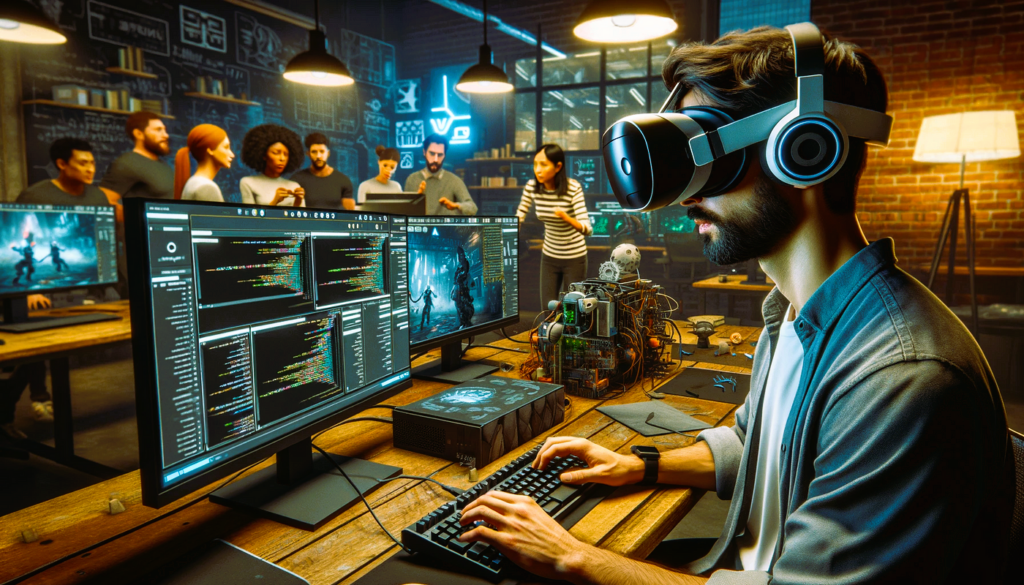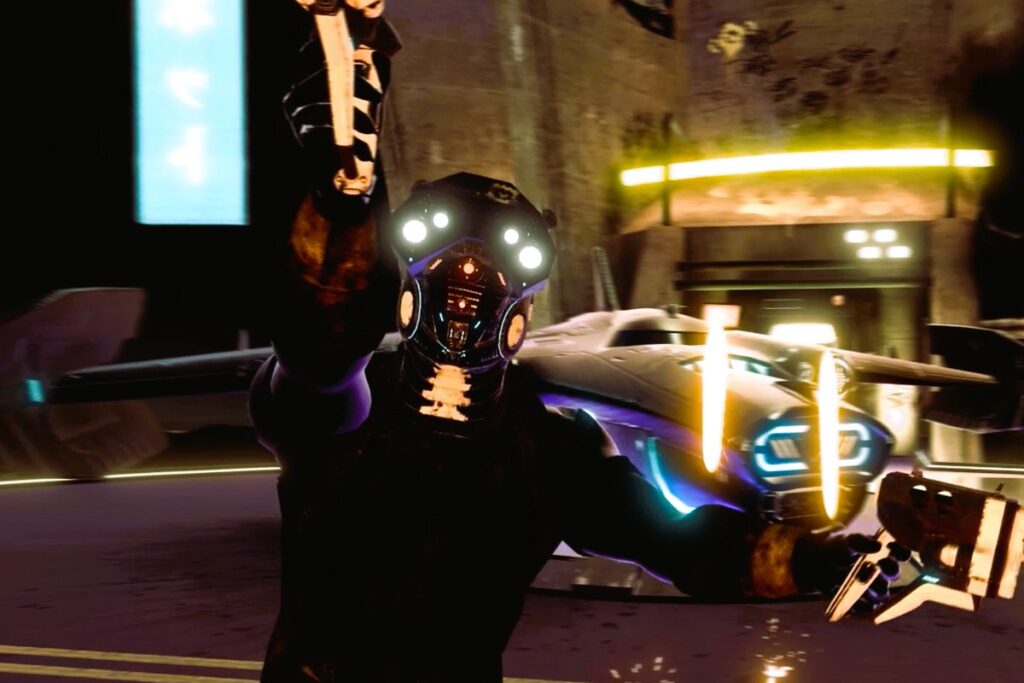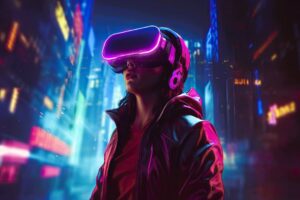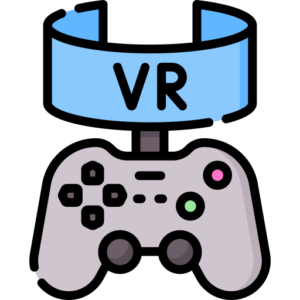Virtual Reality (VR) has revolutionized the gaming industry, offering immersive experiences that transport players into fantastical worlds. Creating a VR game is a complex and fascinating process that involves a multidisciplinary team of developers, designers, artists, and engineers. In this article, we will take you behind the scenes to explore the intricate steps involved in making a VR game, from the initial concept to the final product.
Conceptualization and Planning
The journey of creating a VR game begins with a concept. This initial phase is crucial as it lays the foundation for the entire project. The development team brainstorms ideas, defines the game’s core mechanics, and establishes the overall vision.
Ideation and Brainstorming
The ideation process involves creative brainstorming sessions where team members propose various game ideas. These sessions often include discussions on the game’s genre, storyline, and unique features that will set it apart from other VR games. The goal is to come up with an innovative and engaging concept that leverages the immersive potential of VR technology.
Prototyping
Once a concept is chosen, the team moves on to prototyping. Prototyping involves creating a basic version of the game to test its core mechanics and feasibility. This step is essential for identifying potential challenges and refining gameplay elements before full-scale development begins.
Game Design

Game design is a critical phase where the game’s mechanics, levels, and user interactions are meticulously planned. This phase involves several key components:
Gameplay Mechanics
Defining gameplay mechanics is central to the design process. In VR, mechanics can include player movement, interaction with objects, and combat systems. The design team ensures that these mechanics are intuitive and take full advantage of VR’s immersive capabilities. Read on for our tips and tricks on VR game design for beginners.
Storyboarding
Storyboarding is used to visualize the game’s narrative and key scenes. This helps in mapping out the player’s journey, ensuring a coherent and engaging storyline. Storyboards often include sketches and notes detailing character interactions, environmental changes, and significant plot points.
Level Design
Level design involves creating the various environments and stages the player will explore. This includes designing puzzles, obstacles, and challenges that provide a satisfying gameplay experience. In VR, level design must consider the player’s sense of presence and scale within the virtual world.
Art and Animation
Art and animation bring the game’s visual elements to life. This phase requires collaboration between concept artists, 3D modelers, and animators to create immersive and visually stunning environments.
Concept Art
Concept art serves as the visual blueprint for the game. Artists create detailed illustrations of characters, environments, and objects that guide the 3D modeling process. These artworks help establish the game’s aesthetic and mood.
3D Modeling
3D modelers use the concept art to create detailed 3D models of characters, objects, and environments. These models are meticulously crafted to ensure they look realistic and function correctly in a VR setting.
Animation
Animators breathe life into the 3D models by creating movement and behaviors. This includes character animations, environmental effects, and interactive elements. In VR, animations must be smooth and responsive to enhance the player’s sense of immersion.
Sound Design
Sound design plays a pivotal role in creating an immersive VR experience. The sound team works on everything from ambient sounds and sound effects to voice acting and musical scores.
Ambient Sounds and Effects
Ambient sounds and effects help create a believable and immersive virtual environment. This can include environmental sounds like wind, water, and footsteps, as well as interactive sounds for actions like picking up objects or firing weapons.
Voice Acting
Voice acting adds depth to characters and enhances storytelling. Professional voice actors are hired to bring characters to life with realistic and emotive performances.
Musical Score
The musical score sets the tone and mood of the game. Composers create original music that complements the gameplay and enhances the emotional impact of key scenes.
Programming and Development

Programming and development are the technical backbone of VR game creation. This phase involves coding the game mechanics, integrating assets, and optimizing performance.
Game Engine
Choosing the right game engine is crucial for VR development. Popular engines like Unity and Unreal Engine offer robust tools and features specifically designed for VR. Developers use these engines to build the game’s core systems and functionality.
Scripting and Coding
Scripting and coding involve writing the software that controls the game’s mechanics and interactions. This includes player controls, physics, artificial intelligence, and more. Developers use programming languages like C# (for Unity) and C++ (for Unreal Engine) to implement these features.
Optimization
Optimization ensures that the game runs smoothly on various VR platforms. This involves reducing latency, improving frame rates, and minimizing hardware resource usage. Optimizing a VR game is challenging due to the high performance requirements of VR hardware.
Testing and Quality Assurance
Testing and quality assurance (QA) are critical to delivering a polished and bug-free VR game. This phase involves rigorous testing to identify and fix issues before the game’s release.
Alpha and Beta Testing
During alpha and beta testing, the game is released to a select group of testers who provide feedback on gameplay, performance, and bugs. This feedback is invaluable for making necessary adjustments and improvements.
Bug Fixing
QA teams work closely with developers to identify and fix bugs. This process involves extensive playtesting, code reviews, and stress testing to ensure the game is stable and performs well under various conditions.
Launch and Post-Launch Support
Once the game is polished and ready, it moves to the launch phase. This involves marketing, distribution, and ongoing support to ensure the game’s success.
Marketing and Promotion
Effective marketing and promotion are essential for a successful launch. This can include trailers, social media campaigns, and partnerships with influencers and gaming media outlets.
Distribution
The game is distributed through various platforms such as Steam, Oculus Store, PlayStation Store, and others. Each platform may have its own requirements and certification processes that the game must pass.
Post-Launch Updates
Post-launch support involves releasing updates to fix any remaining issues, add new content, and improve the overall player experience. Ongoing support helps maintain player engagement and loyalty.
Conclusion
Creating a VR game is a complex and collaborative process that combines creativity, technical expertise, and meticulous planning. From the initial concept to the final launch, each phase plays a vital role in bringing a virtual world to life. As VR technology continues to evolve, we can expect even more innovative and immersive gaming experiences in the future.
For more information on virtual reality gaming, visit Wikipedia.


